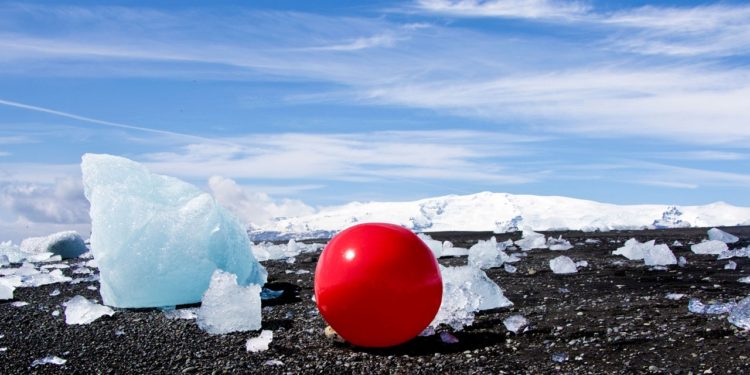By WIRED
It’s been crazy cold this week, even down where I live in Louisiana, thanks to an outbreak of a polar vortex. This frigid air is bad for all kinds of things, including football helmets, apparently. But it’s actually a great time to demonstrate one of the basic ideas in science: the ideal gas law.
You probably have some balloons somewhere around the house, maybe left over from New Year’s. Try this out: Blow up a balloon and tie it off real tight. Got it? Now put on the warmest jacket you have and take the balloon outside. What happens? Yes, with the drop in temperature the balloon shrinks—the volume inside decreases—even though it still contains the same amount of air!
How can that be? Well, according to the ideal gas law, there’s a relationship between the temperature, volume, and pressure of a gas in a closed container, so that if you know two of them you can calculate the third. The famous equation is PV = nRT. It says the pressure (P) times the volume (V) equals the product of the amount of gas (n), a constant of proportionality (R), and the temperature (T). Oh, by the “amount of gas” we mean the mass of all the molecules in it.
There’s a bunch of stuff to go over here, but let me get to the main point. There’s two ways to look at a gas. The one I just gave is actually the chemistry way. This treats a gas as a continuous medium, in the same way you’d look at water as just a fluid, and it has the properties we just mentioned.
But in physics, we like to think of a gas as a collection of discrete particles that move around. In the air, these would be molecules of nitrogen (N2) or oxygen (O2); in the model, they’re just tiny balls bouncing around in a container. An individual particle of gas doesn’t have a pressure or temperature. Instead it has a mass and velocity.
But here’s the important point. If we have two ways to model a gas (as continuous or as particles), these two models should agree in their predictions. In particular, I should be able to explain pressure and temperature by using my particle model. Oh, but what about the other properties in the ideal gas law? Well, we have the volume of a continuous gas. But since a gas takes up all the space in a container, it’s equal to the volume of the container. If I put a bunch of tiny particles in a box of volume V, that would be the same as the volume of the continuous gas. Then we have the “amount” of gas designated by the variable n in the ideal gas law. This is actually the number of moles for that gas. It’s basically just another way to count the number of particles. So, the particle and continuous model also have to agree here. (Want to know more about moles? Here’s an explanation for you.)
Particle Model for the Ideal Gas Law
OK, if you take an inflated balloon, it’s going to have a LOT of molecules of air in it, maybe around 1022 particles. There’s no way you could count them. But we can build a physics model of a gas using a much smaller number of particles. In fact, let’s start with just one particle. Well, I can easily model a single object moving with some constant velocity, but that’s hardly a gas. I at least need to put it in a container. To keep it simple, let’s use a sphere.
The particle will move inside the sphere, but it’s going to have to interact with the wall at some point. When that happens, the wall will exert a force on the particle in a direction perpendicular to the surface. In order to see how this force changes the motion of the particle, we can use the momentum principle. This says that a moving particle has a momentum (p) that is equal to the particle’s mass (m) times its velocity (v). Then a net force (F) will produce a certain change in the momentum (symbolized by Δp) per unit of time. It looks like this:







Discussion about this post